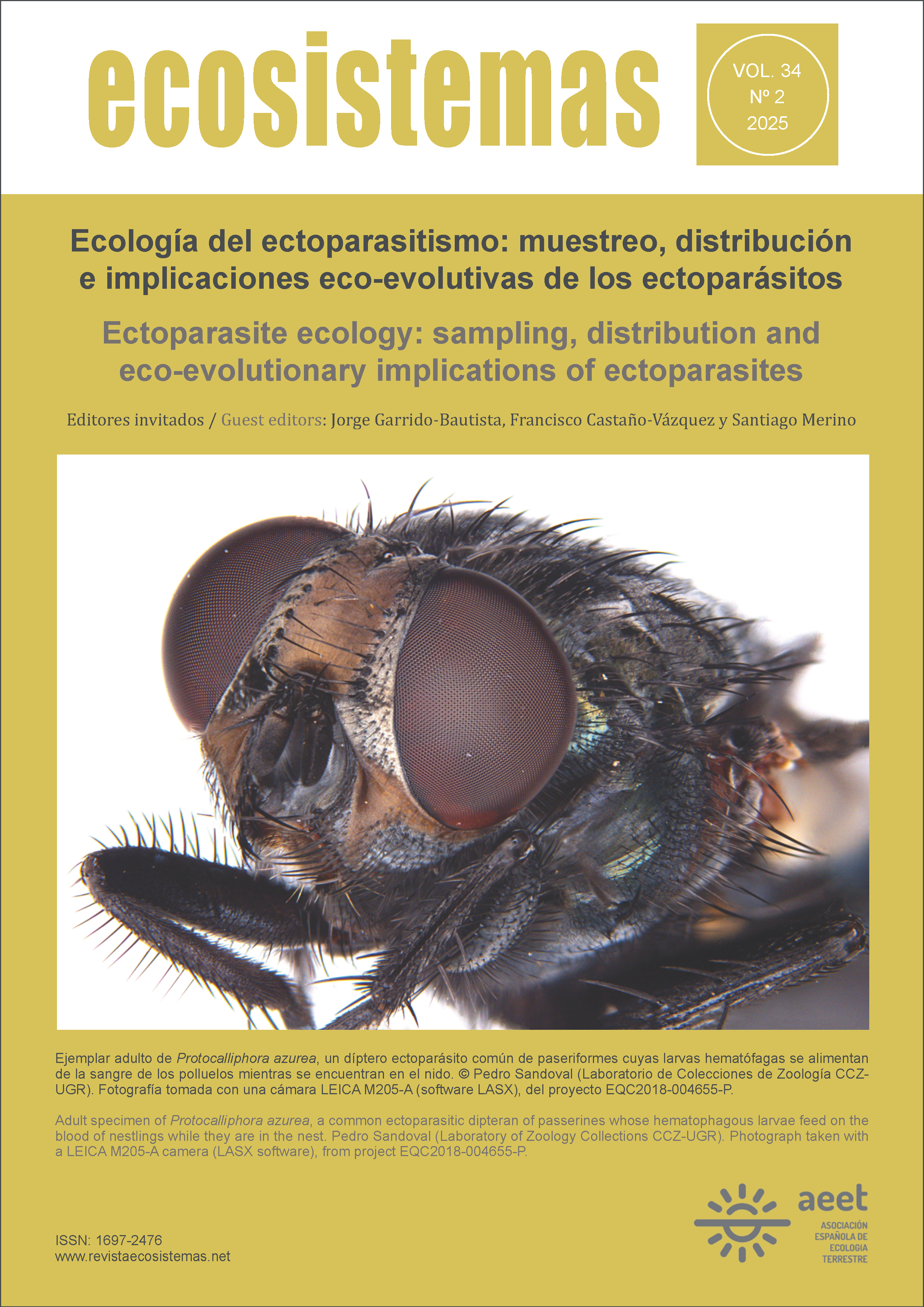Mesostigmatid mites parasitic on wild birds and poultry in South America: current knowledge and future perspectives
Main Article Content
Abstract
The order Mesostigmata (Acari: Parasitiformes) includes many species of mites associated with birds and their nests. In wild birds, these mites are linked to reductions in host fitness, while in poultry, they can cause significant economic losses. Despite their impact, knowledge about the diversity and epidemiology of mesostigmatid mites parasitising birds in South America is limited and comes from isolated studies. This work reviews current knowledge on this group of mites in South America, providing an updated list of reported species. We also outline future research perspectives on parasitic mesostigmatid mites in birds. In South American wild birds, the tropical fowl mite, Ornithonyssus bursa, is one of the most frequently reported species, along with others from the family Macronyssidae, as well as representatives of Dermanyssidae, Rhinonyssidae, and Laelapidae. Ornithonyssus bursa has also been documented in South American poultry systems in the past, but it appears to have been replaced in these systems by the poultry red mite, Dermanyssus gallinae (Dermanyssidae), and the northern fowl mite, Ornithonyssus sylviarum (Macronyssidae), two species with broad geographic distribution commonly associated with poultry. These latter species have also been reported in South American wild birds, possibly due to ‘spillback’ events from domestic to wild animals. Given their potential to transmit pathogens, understanding the diversity of these mites across different environments and hosts and investigating possible ‘spillover’ and ‘spillback’ events is also relevant for the epidemiology of vector-borne diseases in South America.
Downloads
Article Details

This work is licensed under a Creative Commons Attribution-NonCommercial 4.0 International License.
Accepted 2025-05-08
Published 2025-07-23

